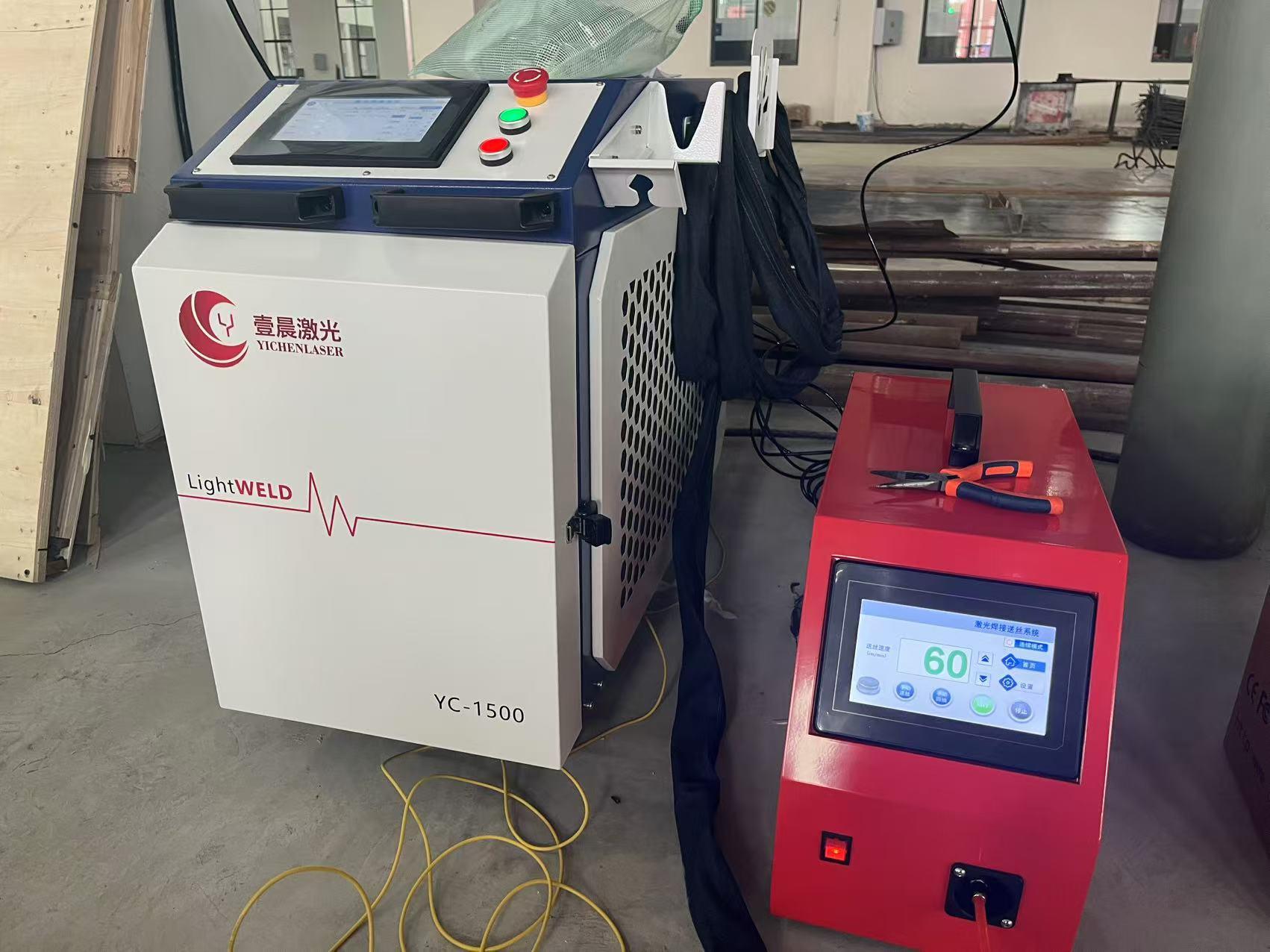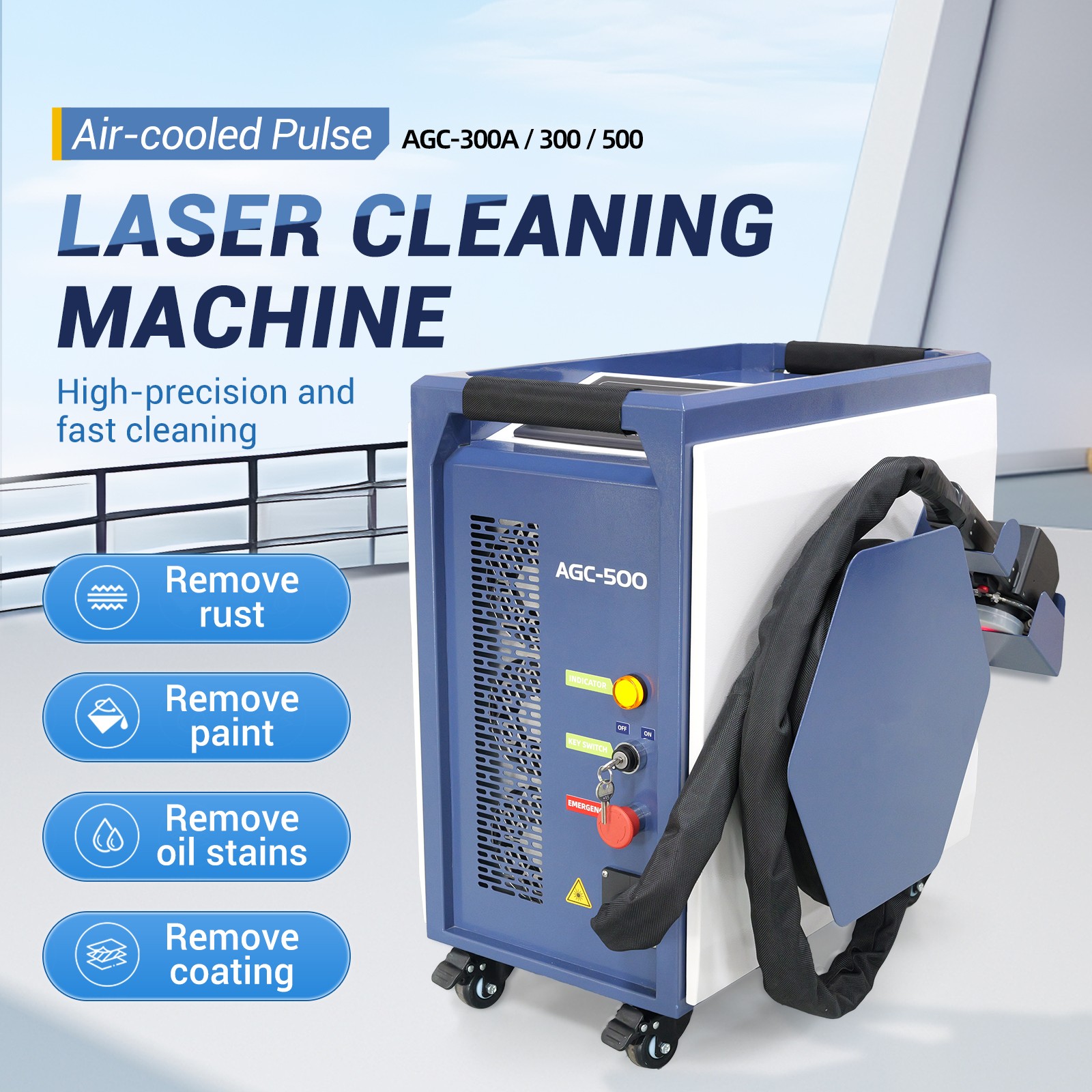As someone who’s worked in metal fabrication and industrial maintenance for over 15 years, I’ve seen countless tools and techniques come and go for tackling rust and surface cleaning. One technology that’s caught my eye—and the attention of many in the industry—is laser rust removal. A few years ago, I was part of a project restoring vintage stainless steel fixtures for a boutique hotel, and the question came up: could a laser rust removal machine handle stainless steel without damaging it? It’s a valid concern, given stainless steel’s unique properties and the high cost of getting it wrong. In this article, I’ll dive into whether laser rust removal machines can be used on stainless steel, drawing from my hands-on experience and technical knowledge to help you make informed decisions for your projects. Whether you’re in manufacturing, restoration, or just curious about this cutting-edge tool, I’ve got you covered with practical insights and tips.

1. Understanding Laser Rust Removal and Stainless Steel
Before we get into the specifics, let’s break down the basics. Laser rust removal machines use high-intensity laser beams to vaporize rust, oxides, and contaminants from metal surfaces. The process, known as laser ablation, is precise, non-contact, and eco-friendly, making it a game-changer compared to traditional methods like sandblasting or chemical cleaning. These machines can range from portable handheld units (100W–500W) to industrial-grade systems (1000W–3000W), with prices starting at $5,000 and going up to $100,000+.
Stainless steel, on the other hand, is a corrosion-resistant alloy containing chromium (at least 10.5%), which forms a passive oxide layer to protect against rust. Common grades include 304 (general-purpose), 316 (marine-grade), and 430 (ferritic). While stainless steel is less prone to rust than carbon steel, it can still develop surface rust or discoloration, especially in harsh environments like coastal areas or chemical plants.
I first saw laser rust removal in action at a shipyard, where we used a 1000W machine to clean rusted stainless steel railings. The results were impressive, but we had to tweak settings to avoid damaging the metal. This experience shaped my understanding of how laser technology interacts with stainless steel, which I’ll share below.
2. Can Laser Rust Removal Machines Handle Stainless Steel?
The short answer is yes, laser rust removal machines can effectively clean stainless steel, but it comes with nuances. The process works well for removing surface rust, oxide layers, grease, or discoloration without compromising the metal’s integrity—if done correctly. However, stainless steel’s reflective surface and protective oxide layer require careful handling to avoid issues like overheating or altering the finish.
Here’s a detailed look at how laser rust removal performs on stainless steel, based on my observations and industry practices.

a. Effectiveness on Surface Rust and Contaminants
Laser rust removal excels at clearing light surface rust and discoloration from stainless steel. The laser targets iron oxides (rust) and vaporizes them, leaving the underlying metal intact. It’s also great for removing grease, oil, or weld stains, which are common in stainless steel applications.
During the hotel restoration project, we used a 200W handheld laser to clean rusty patches on 304 stainless steel fixtures exposed to salty coastal air. The rust vanished in seconds, and the surface regained its shine without abrasive damage. Key benefits:
Precision: The laser only removes contaminants, preserving the base metal.
Non-abrasive: Unlike sandblasting, it doesn’t scratch or roughen the surface.
Versatility: Works on various stainless steel grades and finishes (brushed, polished, matte).
b. Challenges with Stainless Steel
Stainless steel’s high reflectivity and thermal conductivity pose challenges. The chromium oxide layer reflects laser energy, requiring higher power or adjusted settings to achieve results. If the laser is too intense, it can overheat the surface, causing micro-cracks, discoloration (e.g., yellowing), or damage to the passivation layer, which could reduce corrosion resistance.
I learned this the hard way during an early trial when we cranked up a 500W laser on a polished 316 stainless steel panel. The surface developed a faint haze, requiring repolishing. Critical considerations:
Adjust power settings: Lower power (50–200W) is often sufficient for light rust.
Use pulse mode: Short, controlled pulses minimize heat buildup.
Test first: Always test on a small, inconspicuous area to dial in settings.

c. Suitability for Different Stainless Steel Grades
Most stainless steel grades—austenitic (304, 316), ferritic (430), and martensitic (410)—can be cleaned with lasers, but their composition affects the process. For example:
304/316: Common in food processing and marine applications, these grades respond well to laser cleaning, but polished finishes need low power to avoid haze.
430: Ferritic stainless steel, used in appliances, is less reflective and easier to clean but may show slight color changes if overheated.
410: Harder and less corrosion-resistant, it requires careful settings to avoid surface damage.
In a factory project, we cleaned 430 stainless steel conveyor parts with a 100W laser, and the process was smooth. But when we tried the same settings on 316, we needed adjustments to prevent overheating.
3. Advantages of Using Laser Rust Removal on Stainless Steel
Laser rust removal offers unique benefits for stainless steel, making it a go-to for specific applications. Here’s why I often recommend it:
a. Eco-Friendly and Chemical-Free
Unlike acid pickling or chemical cleaners, laser cleaning uses no chemicals, producing minimal waste (just vaporized rust). This is a big plus for industries like food processing, where stainless steel is common, and environmental regulations are strict.
In a brewery project, we used a laser to clean stainless steel tanks, avoiding harsh chemicals that could contaminate the facility. The client was thrilled with the green approach.
b. Preserves Surface Finish
Lasers are non-abrasive, preserving stainless steel’s polished or brushed finish. Sandblasting or wire brushing can leave scratches, requiring costly refinishing, but lasers maintain the original look.
I’ve seen lasers restore antique stainless steel fixtures to their original luster, saving hours of manual polishing.

c. Speed and Efficiency
For small to medium areas, lasers are fast, removing rust in seconds. Handheld units are portable, ideal for on-site work, while automated systems handle large-scale tasks efficiently.
During a maintenance job at a chemical plant, we cleaned 50 meters of stainless steel piping in half a day with a 300W laser—much faster than manual methods.
d. Minimal Heat Impact
When set correctly, lasers produce minimal heat-affected zones (HAZ), reducing the risk of warping or altering stainless steel’s properties. This is crucial for precision components.
4. Limitations and Risks
While effective, laser rust removal isn’t perfect for every stainless steel scenario. Here are the drawbacks I’ve encountered:
a. High Initial Cost
Laser machines are expensive, with even entry-level models costing $5,000–$10,000. For small businesses or one-off projects, renting or outsourcing may be more cost-effective.
I advised a small workshop to rent a 100W laser for a stainless steel job rather than buying, saving them thousands.
b. Operator Skill Required
Laser cleaning requires trained operators to adjust power, pulse frequency, and scan patterns. Incorrect settings can damage stainless steel or reduce efficiency.
In one project, an untrained worker used excessive power, causing micro-pitting on a 304 surface. Proper training could’ve prevented this.
c. Not Ideal for Heavy Rust
Lasers struggle with thick rust layers (e.g., >1mm). For heavily corroded stainless steel, you may need to pre-treat with mechanical methods before laser finishing.
We faced this in a marine repair job, where thick rust on 316 stainless steel required initial wire brushing before laser cleaning.
d. Safety Concerns
Lasers emit high-intensity light, posing risks to eyes and skin. Operators need protective gear, and the work area must be shielded to prevent accidental exposure.
I always ensure my team uses certified laser safety glasses and sets up barriers during operation.

5. Comparison Table: Laser Rust Removal vs. Other Methods for Stainless Steel
To help you decide if laser cleaning is right for your stainless steel project, here’s a table comparing it to traditional methods:
| Method | Effectiveness | Surface Impact | Eco-Friendliness | Cost |
|---|---|---|---|---|
| Laser Cleaning | High for light rust | Non-abrasive, preserves finish | High, no chemicals | High upfront |
| Sandblasting | High, all rust levels | Abrasive, may scratch | Low, dust and waste | Moderate |
| Chemical Cleaning | Moderate, surface rust | Risk of etching | Low, chemical waste | Low |
| Wire Brushing | Low, surface rust only | Abrasive, scratches | High, no chemicals | Low |
This table shows lasers’ edge for precision and eco-friendliness, though cost and heavy rust limitations are factors.
6. Tips for Using Laser Rust Removal on Stainless Steel
Based on my experience, here’s how to get the best results:
Start with a Test Patch: Always test on a small area to fine-tune power (50–200W), pulse frequency (20–100 kHz), and scan speed.
Use Pulse Mode: Short pulses (nanoseconds) reduce heat buildup, protecting stainless steel’s finish.
Clean the Surface First: Remove grease or dirt with a solvent to improve laser efficiency.
Monitor Temperature: If the surface feels hot to the touch, lower the power or increase scan speed to avoid damage.
Choose the Right Machine: For small jobs, a 100–200W handheld unit is sufficient; larger projects may need 500W+.
In a recent project, we used a 100W laser on 304 stainless steel railings, starting at 50W and adjusting up. The results were flawless after testing.

7. Is Laser Rust Removal Right for Your Stainless Steel Project?
Laser rust removal is ideal for light rust, discoloration, or weld stains on stainless steel, especially in industries like food processing, marine, or restoration where precision and aesthetics matter. However, for heavily rusted surfaces or budget-constrained projects, traditional methods like sandblasting may be more practical. Consider your project’s scale, stainless steel grade, and finish requirements.
I’ve seen lasers shine in high-end applications, like cleaning stainless steel sculptures, but for a rusted ship hull, we combined mechanical pre-treatment with laser finishing for cost-effectiveness.
8. The Future of Laser Rust Removal
Laser technology is advancing, with lower-cost machines, AI-driven settings, and portable units making it more accessible. Newer models offer multi-wavelength lasers that handle reflective surfaces like stainless steel better. As prices drop, I expect lasers to become standard in metal maintenance.
Wrapping Up: Clean Smart, Preserve Value
Using a laser rust removal machine on stainless steel is not only possible but highly effective when done right. Its precision, eco-friendliness, and ability to preserve finishes make it a powerful tool for everything from industrial maintenance to delicate restorations. However, success depends on proper settings, operator skill, and realistic expectations about cost and rust severity. Having used lasers across various projects, I can attest to their transformative potential when applied thoughtfully. Evaluate your needs, test thoroughly, and you’ll unlock the full benefits of this technology.
Have more questions about laser cleaning or stainless steel maintenance? I’m happy to share more insights—let’s keep your metal shining!

Related Q&A
1. Will laser rust removal damage stainless steel’s corrosion resistance?
If settings are correct (low power, pulse mode), the passivation layer stays intact. Overheating can weaken it, so test and monitor temperature.
2. How long does it take to clean stainless steel with a laser?
Light rust on a square meter takes 5–15 minutes with a 100–200W laser, depending on settings. Heavy rust requires pre-treatment, adding time.
3. Can I use a laser on polished stainless steel?
Yes, but use low power (50–100W) and pulse mode to avoid haze or discoloration. Test on a small area first.
4. Are laser rust removal machines safe for operators?
With proper safety gear (laser glasses, gloves) and barriers, they’re safe. Training is essential to prevent eye or skin exposure.
5. Is laser cleaning cost-effective for small businesses?
For occasional use, renting a machine ($200–$500/day) is more economical than buying. For frequent use, the investment pays off with efficiency gains.






